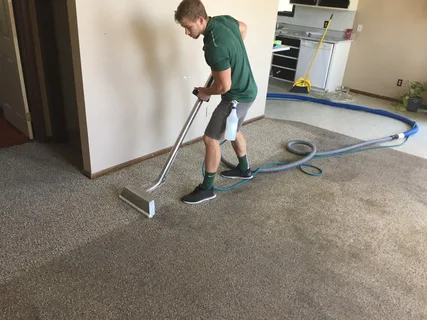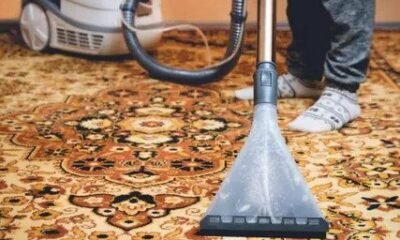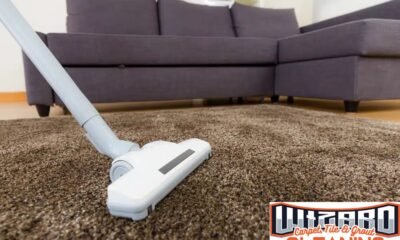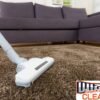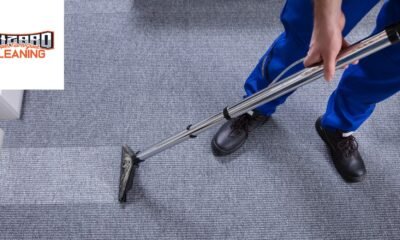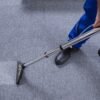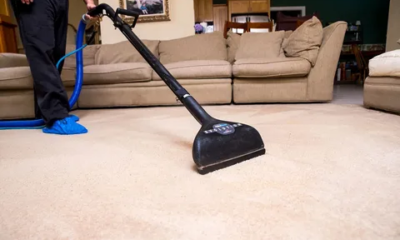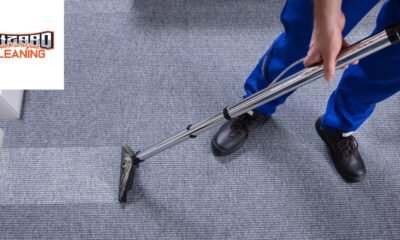Cleaning
How Long Does Carpet Take to Dry After Steam Cleaning?
Steam cleaning, also known as hot water extraction, is a popular method for deep cleaning carpets. This process involves the use of hot water and cleaning solutions to penetrate the carpet fibres, effectively removing dirt, stains, and allergens. However, one common concern among homeowners and businesses is the drying time following steam cleaning.
Understanding the factors that influence drying times and the techniques to expedite the Carpet Steam Cleaning Whittlesea process is essential for maintaining a clean and healthy carpet. In this comprehensive guide, let’s explore the various aspects of carpet drying after steam cleaning, providing valuable insights and practical tips for achieving faster drying times.
-
Factors Affecting Drying Time
Several factors influence the drying time of carpets after steam cleaning:
Type of Carpet Fibre
Different carpet fibres, such as synthetic, wool, or natural options, have distinct effects on drying times. Synthetic fibres, known for their moisture-wicking properties, typically dry faster than their natural counterparts. This variance arises from the ability of the synthetic fibres to draw moisture away from the carpet material efficiently.
In contrast, natural fibres may retain moisture longer, resulting in extended drying periods. Understanding these differences can inform decisions when selecting carpet materials based on desired drying times and other factors.
Humidity Levels
Elevated humidity levels can significantly extend the drying duration of carpets as the fibres absorb moisture from the air. In contrast, lower humidity environments promote expedited evaporation of moisture from the carpet, leading to quicker drying times. Understanding the influence of humidity on the drying process is crucial when considering factors such as climate conditions and indoor humidity levels.
By managing humidity levels effectively, homeowners and professionals can optimise the drying process and maintain the condition of carpets more efficiently, ensuring timely completion of tasks and minimising potential issues associated with prolonged moisture exposure.
Room Temperature and Air Circulation
Optimal drying conditions for carpets are facilitated by warmer temperatures and adequate air circulation, which expedite the evaporation process. Conversely, cold or stagnant air can hinder moisture evaporation, leading to prolonged drying times. Understanding the impact of environmental factors such as temperature and air movement is essential in ensuring efficient drying processes.
By creating conditions conducive to evaporation, such as maintaining warmth and promoting airflow, homeowners and professionals can expedite drying times and minimise the risk of issues associated with prolonged moisture exposure, ensuring carpets are restored to optimal condition in a timely manner.
Amount of Moisture Used During Steam Cleaning
The quantity of water and cleaning agents utilised during steam cleaning directly influences drying duration. An excess of moisture can significantly prolong the drying process. Achieving the right balance in water usage is crucial to expedite drying times and prevent issues associated with excessive moisture retention.
Professionals and homeowners must exercise caution to avoid over-saturation during cleaning, ensuring that carpets receive adequate moisture for effective carpet steam cleaning Whittlesea without leading to prolonged drying periods. By controlling the volume of water and cleaning solutions applied, individuals can optimise the drying process, facilitating quicker restoration of carpets to their desired condition.
-
General Drying Times for Different Carpets
Synthetic Fiber Carpets –
Estimated Drying Time Range
Synthetic fibre carpets typically require 6 to 10 hours to dry completely after steam cleaning, depending on the factors mentioned earlier.
Tips for Faster Drying
Enhancing ventilation is key to accelerating the drying of synthetic fibre carpets. Opening windows, employing fans, and activating ceiling fans promote airflow, expediting moisture evaporation. Adjusting room temperature to a comfortable warmth further aids in quicker drying.
These measures optimise conditions for efficient moisture removal from carpets, ensuring swifter restoration. By implementing proper ventilation and temperature control, homeowners and professionals can expedite drying times, minimise the risk of issues associated with prolonged moisture exposure, and swiftly return carpets to their optimal condition.
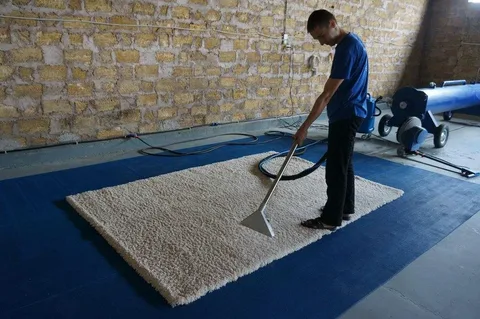
-
Wool or Natural Fiber Carpets
Estimated Drying Time Range
Wool or natural fibre carpets generally have a longer drying time, ranging from 12 to 24 hours after steam cleaning, primarily due to their higher absorbency.
Precautions to Take for Longer Drying Times
During prolonged drying periods for wool or natural fibre carpets, caution is crucial to prevent damage and ensure even drying. Avoid walking on damp carpets excessively, as this can compress fibres and lead to uneven drying or permanent distortion.
Similarly, refrain from placing heavy furniture on damp areas to prevent indentations and promote uniform drying. By exercising care and allowing carpets to dry undisturbed, homeowners can maintain their integrity and prolong their lifespan, ensuring they retain their original appearance and quality.
Techniques to Speed up Drying Process
Proper Ventilation and Air Circulation Tips
Opening windows and doors to allow fresh air to circulate throughout the room can facilitate faster drying. Additionally, using oscillating fans or ceiling fans can help disperse moisture and expedite the evaporation process.
Use of Fans or Dehumidifiers
Placing portable fans strategically to direct airflow across the carpet and utilising dehumidifiers to reduce moisture levels in the air can significantly accelerate the drying time.
Professional Carpet Cleaning Services with Quick-Dry Method
Many professional carpet steam cleaning Whittlesea services offer quick-dry methods that utilise specialised equipment and techniques to extract excess moisture, promoting faster drying times. Engaging the services of professionals with expertise in quick-dry methods can be beneficial for those seeking expedited drying for their carpets.
-
Risks of Extended Drying Periods
Mould and Mildew Growth
Prolonged dampness in carpets can create an environment conducive to mould and mildew growth. This not only poses health risks but also leads to unpleasant odours and potential damage to the carpet fibres.
Odour Development
Lingering moisture in carpets can result in musty odours, compromising the freshness and cleanliness of the carpet. Addressing extended drying times promptly is crucial to prevent odour development.
-
Recommendations for Maintaining a Healthy, Dry Carpet
After steam cleaning, it is advisable to
Monitor the Drying Process
Keep track of the drying progress and take measures to enhance ventilation and air circulation as needed.
Avoid Heavy Foot Traffic
Minimise walking on the carpet during the drying period, especially for natural fibre carpets, to prevent matting and promote even drying.
Address Lingering Moisture
If certain areas of the carpet appear to be drying at a slower rate, focus on targeted ventilation and spot treatments to expedite the drying process.
Professional Inspection
Consider engaging professional carpet cleaning services for a post-cleaning inspection to ensure that the carpet is thoroughly dry and free from any potential issues.
By following these recommendations and being proactive in facilitating the drying process, individuals and businesses can maintain a healthy, clean, and dry carpet after steam cleaning, ultimately prolonging the longevity and appearance of their carpets.
In essence, the drying time of carpets after steam cleaning is influenced by various factors, and proactive measures can be taken to expedite the process and mitigate potential risks. By understanding the dynamics of carpet drying and implementing practical techniques, individuals and businesses can enjoy the benefits of a clean and healthy carpet in a timely manner.
Summing Up
In summation, understanding the factors that affect the drying time of carpets after steam cleaning is essential for maintaining a clean and healthy indoor environment. By considering the type of carpet fibre, humidity levels, room temperature, and air circulation, individuals and businesses can make informed decisions to expedite the drying process effectively.
Additionally, implementing proper ventilation, utilising fans or dehumidifiers, and exploring professional carpet steam cleaning Whittlesea services are proactive measures to achieve faster drying times. By being mindful of the risks associated with extended drying periods, such as mould growth and odour development, individuals can take steps to prevent potential damage and maintain a fresh, dry carpet.


